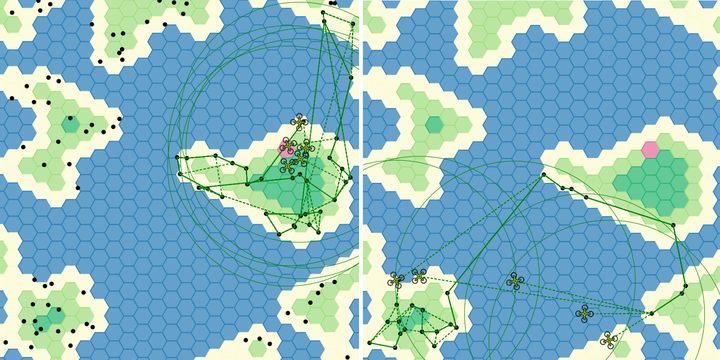
Abstract
Through the use of autonomy Unmanned Aerial Vehicles (UAVs) can be used to solve a range of of multi-agent problems that exist in the real world, for example search and rescue or surveillance. Within these scenarios the global objective might often be better achieved if aspects of the problem can be optimally shared amongst its agents. However, in uncertain, dynamic and often partially observable environments centralised global-optimisation techniques are not achievable. Instead, agents may have to act on their own belief of the world, making the best decisions independently and potentially myopically. With multiple agents acting in a decentralised manner how can we discourage competitive behaviour and instead facilitate cooperation. This paper focuses on the specific problem of multiple UAVs simultaneously searching for tasks in an environment whilst efficiently routing between them and ultimately visiting them. This paper is motivated by this idea that collaboration can be simple and achieved without the need for a dialogue but instead through the design of the individual agent’s behaviour. By focusing on what is communicated we expand the use of a single agent behaviour. Which through minor modifications can produce distinct agents demonstrating independent, collaborative and competitive behaviour. In particular by investigating the role of sensor and communication ranges this paper will show that increased sensor ranges can be detrimental to system performance, and instead the simple modelling of nearby agents’ intent is a far better approach.